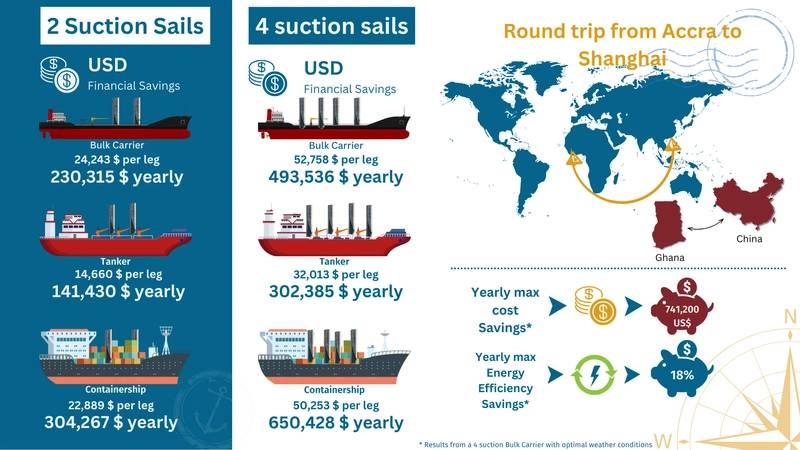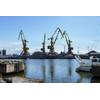Wind Propulsion Key to Cut Shipping Costs and Carbon, According to Report
As the International Maritime Organization (IMO) prepares to meet in London from March 31 to April 11 to finalize measures for its greenhouse gas (GHG) strategy, a new report by marine NGO Seas At Risk shows the economic and climate benefits of using wind-assisted propulsion to power global shipping.
The ‘Wind First!’ study shows that retrofitting sails on large, existing vessels can save close to half a million U.S. dollars on fuel costs and reduce fuel consumption and carbon emissions by up to 12%, annually.

This makes wind-assisted propulsion–which is readily available and scalable today–a critical tool to bridge the 2030 target of 5% zero and near zero-emission energy uptake in the IMOGHG Strategy. If wind sails were integrated into the global shipping fleet, the energy savings gained would kick-start GHG reductions, reduce the immediate need for e-fuels production and allow for the market to mature more gradually, avoiding shocks.
The IMO’s 176 member states need to agree on robust climate policies this year, with wind as a central solution, including a $150 carbon levy, a Fuels Standard that rewards wind-assisted propulsion use, and improved energy efficiency framework (CII).
In 2023, the IMO adopted a Revised GHG Strategy to reach zero emissions by 2050 with targets along the way: 30% by 2030 and 80% by 2040, as well as a 5% goal of zero/near-zero emission energy uptake by 2030.
Governments are now in negotiations on measures to deliver these targets. Global policies, such as those adopted at the IMO, are necessary to provide market incentives for companies to scale up investments in zero-emission fuels and technologies and to meet the IMO’s climate commitment.
Related News


